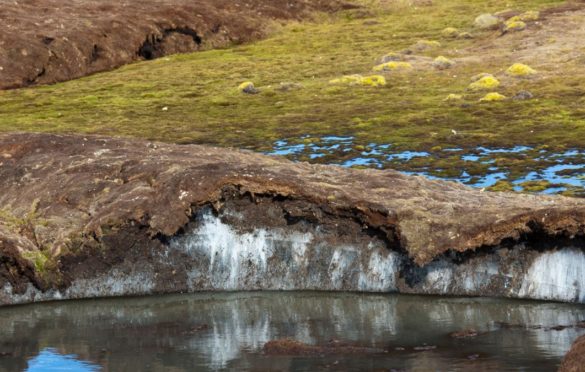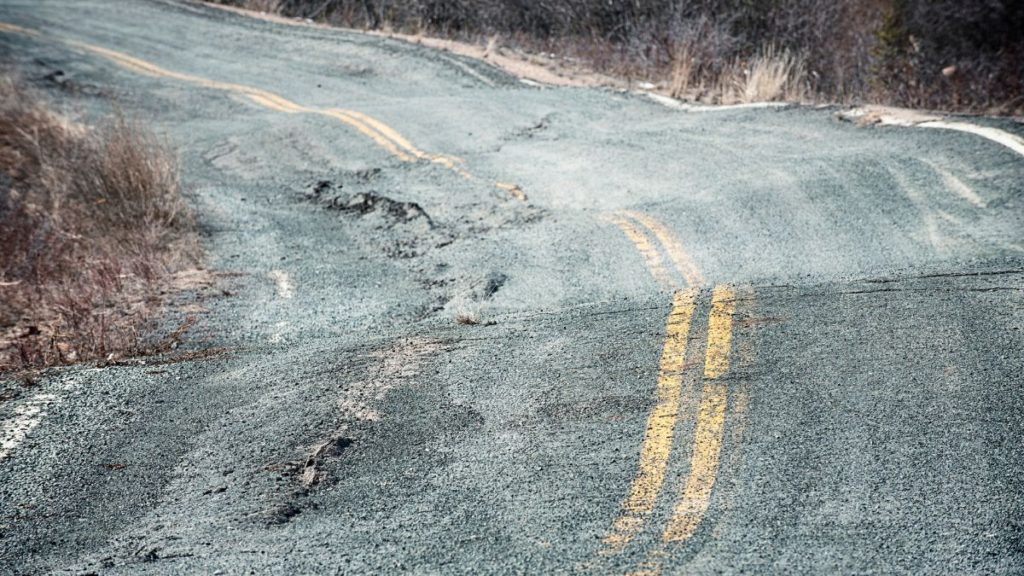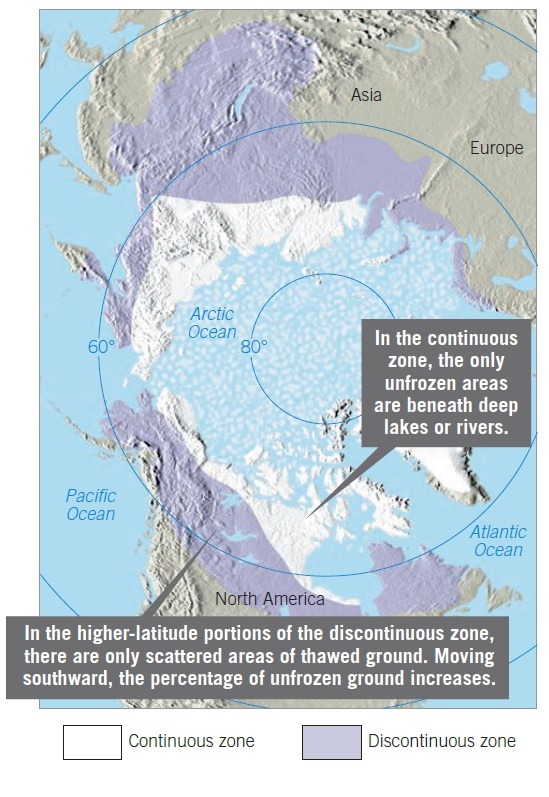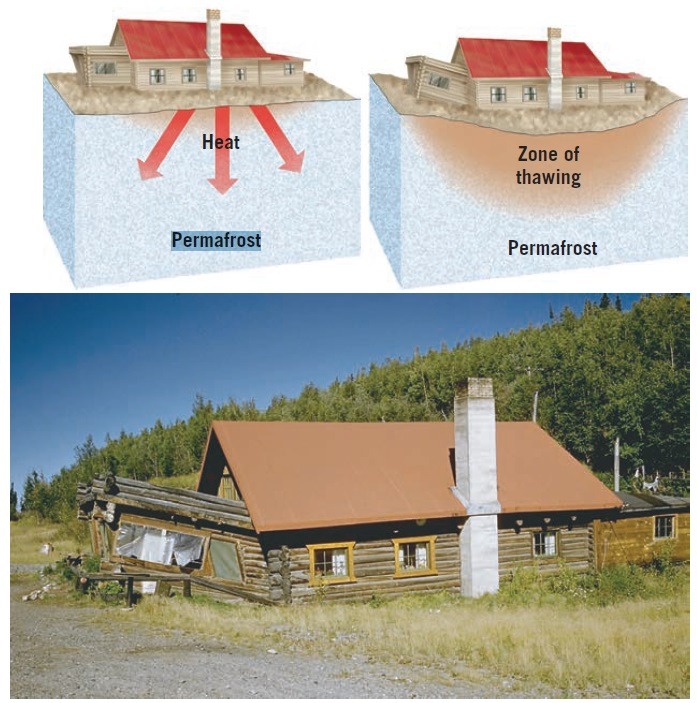What is permafrost?

Permanently frozen ground, known as permafrost, occurs where summers are too short and cool to melt more than a shallow surface layer.
Many of the mass-wasting disasters had sudden and disastrous impacts on people. When the activities of people cause ice contained in permanently frozen ground to melt, the impact is more gradual and less deadly. Nevertheless, because permafrost regions are sensitive and fragile landscapes, the scars resulting from poorly planned actions can remain for generations.

Permanently frozen ground, known as permafrost, occurs where summers are too short and cool to melt more than a shallow surface layer. Deeper ground remains frozen year-round. Permafrost is extensive in the lands surrounding the Arctic Ocean.

Strictly speaking, permafrost is defined only on the basis of temperature; that is, it is ground with temperatures that have remained below 0°C (32°F) continuously for 2 years or more.
The degree to which ice is present in the ground strongly affects the behavior of people disturb the surface, such as by removing the insulating vegetation mat or by constructing roads and buildings, the delicate thermal balance is disturbed, and ice within the permafrost can thaw. Thawing produces unstable ground that may slide, slump, subside, and undergo severe frost heaving. When a heated structure is built directly on permafrost that contains a high proportion of ice, thawing creates soggy material into which a building can sink.

One solution is to place buildings and other structures on piles, like stilts. Such piles allow subfreezing air to circulate between the floor of the building and the soil and thereby keep the ground frozen.
